Vikas Chawla
A Bayesian Network approach to County-Level Corn Yield Prediction using historical data and expert knowledge
Aug 17, 2016

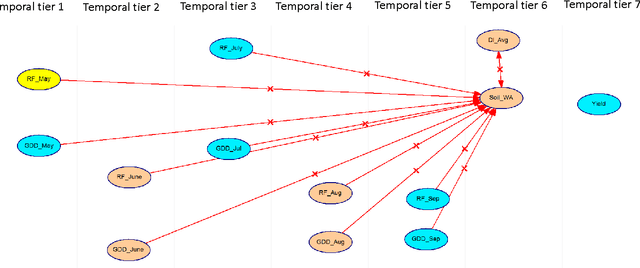
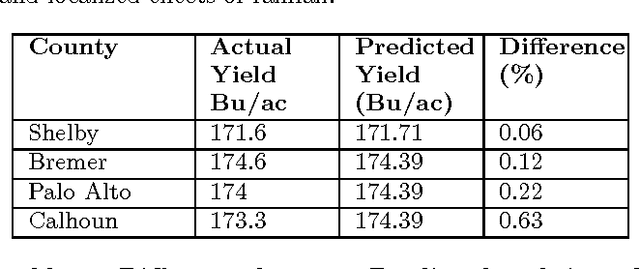
Abstract:Crop yield forecasting is the methodology of predicting crop yields prior to harvest. The availability of accurate yield prediction frameworks have enormous implications from multiple standpoints, including impact on the crop commodity futures markets, formulation of agricultural policy, as well as crop insurance rating. The focus of this work is to construct a corn yield predictor at the county scale. Corn yield (forecasting) depends on a complex, interconnected set of variables that include economic, agricultural, management and meteorological factors. Conventional forecasting is either knowledge-based computer programs (that simulate plant-weather-soil-management interactions) coupled with targeted surveys or statistical model based. The former is limited by the need for painstaking calibration, while the latter is limited to univariate analysis or similar simplifying assumptions that fail to capture the complex interdependencies affecting yield. In this paper, we propose a data-driven approach that is "gray box" i.e. that seamlessly utilizes expert knowledge in constructing a statistical network model for corn yield forecasting. Our multivariate gray box model is developed on Bayesian network analysis to build a Directed Acyclic Graph (DAG) between predictors and yield. Starting from a complete graph connecting various carefully chosen variables and yield, expert knowledge is used to prune or strengthen edges connecting variables. Subsequently the structure (connectivity and edge weights) of the DAG that maximizes the likelihood of observing the training data is identified via optimization. We curated an extensive set of historical data (1948-2012) for each of the 99 counties in Iowa as data to train the model.
An end-to-end convolutional selective autoencoder approach to Soybean Cyst Nematode eggs detection
Mar 25, 2016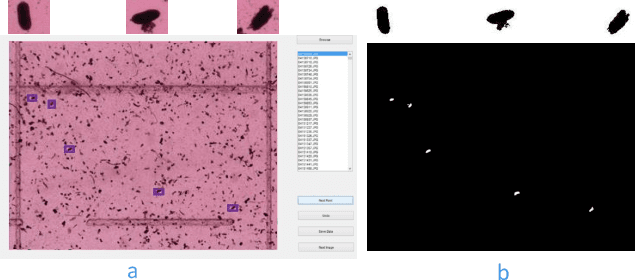

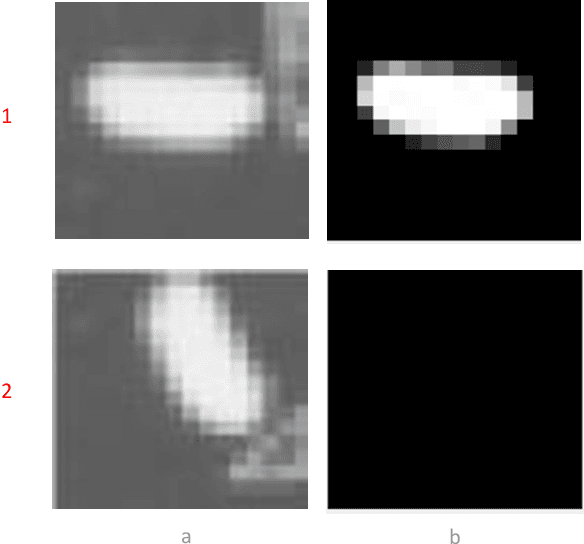
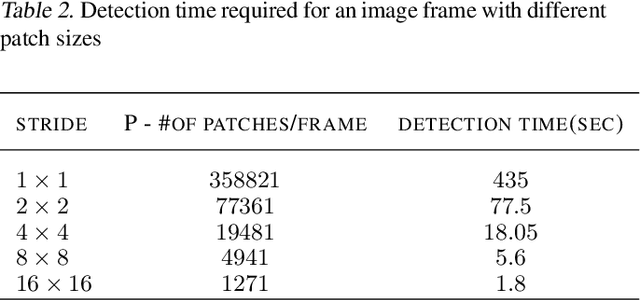
Abstract:This paper proposes a novel selective autoencoder approach within the framework of deep convolutional networks. The crux of the idea is to train a deep convolutional autoencoder to suppress undesired parts of an image frame while allowing the desired parts resulting in efficient object detection. The efficacy of the framework is demonstrated on a critical plant science problem. In the United States, approximately $1 billion is lost per annum due to a nematode infection on soybean plants. Currently, plant-pathologists rely on labor-intensive and time-consuming identification of Soybean Cyst Nematode (SCN) eggs in soil samples via manual microscopy. The proposed framework attempts to significantly expedite the process by using a series of manually labeled microscopic images for training followed by automated high-throughput egg detection. The problem is particularly difficult due to the presence of a large population of non-egg particles (disturbances) in the image frames that are very similar to SCN eggs in shape, pose and illumination. Therefore, the selective autoencoder is trained to learn unique features related to the invariant shapes and sizes of the SCN eggs without handcrafting. After that, a composite non-maximum suppression and differencing is applied at the post-processing stage.
 Add to Chrome
Add to Chrome Add to Firefox
Add to Firefox Add to Edge
Add to Edge